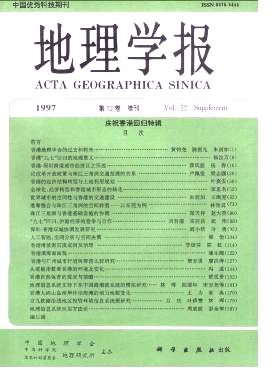Zhu Cheng, Yu Shiyong, Lu Chuncheng
The culture of Neolithic Age in the Three Gorges of Changjiang River and the Jianghan Plain can be divided into 4 stages, that is, (1) Chengbeixi Culture (8 300 a BP~6 300 a BP); (2) Daxi Culture (6 300 a BP~5 000 a BP); (3) Qujialing Culture (5 000 a BP~4 600 a BP); (4) Shijiahe Culture (4 600 a BP~4 000 a BP). It is found by excavation that most of ancient cultural sites of Neolithic Age in this area are distributed in the broad valley regions on the south bank of the Changjiang River and located on the first or second graded terraces (80 m a.s.l.), where as, in the Jianghan Plain, many ancient cultural sites are under the current flood level of the Changjiang River, some of these sites are buried 5 m~6 m deep or in the lay at the bottom of the lakes like as Xiantao, Yuezhou etc.. According to the data from Shandouping hydrologic station, the modern mean flood level is 57.76 m a.s.l., the sites, therefore, could not be submerged at all in a general flood of nowadays. But archaeologic excavations in recent years show that in many ancient cultural sites along the Changjiang River and its branches, there are several natural layers of sludge and sand between upper and lower cultural layers, which are named cultural interruption. The fine grained sediments of the cultural interruption were deposited and preserved on the high terraces of the Changjiang River when they experience abnormal extreme floods and when they were far away from main current line and the velocities of currents were slowed down. Hence, they demonstrate the flood damage and their times in the prehistory period. The duration of them could be determined from the archaeologic chronology of its upper and lower cultural layers. By the authors’ study, the 12 ancient cultural sites reveal that, in Neolithic Age, there are 12 times of extreme flood disasters in this area. Emphatically, there are 6 times took place in Daxi Cultural period, and the last one was devastating, man had to emigrate from the Three Gorges to the east of Jingbei and Edong moutains. Moreover, during the engineering constructions and Quaternary geologic survey, plenty of fossil trees and peat deposition were discovered in many places, their ages are the same as those natural layers in ancient cultural sites, most of the trees are well round and deposit mixed with coarse sands and gravels. In addition, based on the statistics to the number and mean height above river level of the sites in each ancient cultural period, it was found that there are 5 times of obvious ancient cultural fluctuations (cultural low tide), which chronology is corresponding to the above flood periods. All of them are also evidences of flood disasters in prehistory period. In addition, there are a lot of history materials, inscriptions and flood traces recording flood disasters in the history period. Based on the paleoflood sediments from 12 sites and the history literature, a chronology of paleofloods reveals that the frequency (times per 100 years) changes of large floods in this region could be clustered into 4 distinct time intervals: (1) Deluge Ⅰ, from 8 000 a BP to 5 500 a BP, there were 9 times of extreme floods this period was the second warm period (7 000 a BP~ 5 800 a BP ) of Holocene Neotemperate Phase, at that time, the East China sea level was 4 meters higher than that of today, and the Jianghan lakes were also in the second highest water level period (6 000 a BP~5 000 a BP). (2) Deluge Ⅱ, from 4 700 aBP to 3 500 aBP, there were 9 times of extreme floods at least, this period was in the first warm period of the Chinese history (5 000 a BP~2 000 a BP), at that time, air temperature was 2℃~3℃ and sea level was 2.1 m higher than that of today, the Jianghan lakes were in the third high water level period (4 000 a BP~3 000 a BP). (3) Deluge Ⅲ, from 2 200 a BP to 700 a BP, there were 91 times of extreme floods. But only in the Medieval warm period (1 100 AD~1 000 AD), 35 times of floods occured. These 3 times of deluge period above are all correlated with powerful activity of the East A
